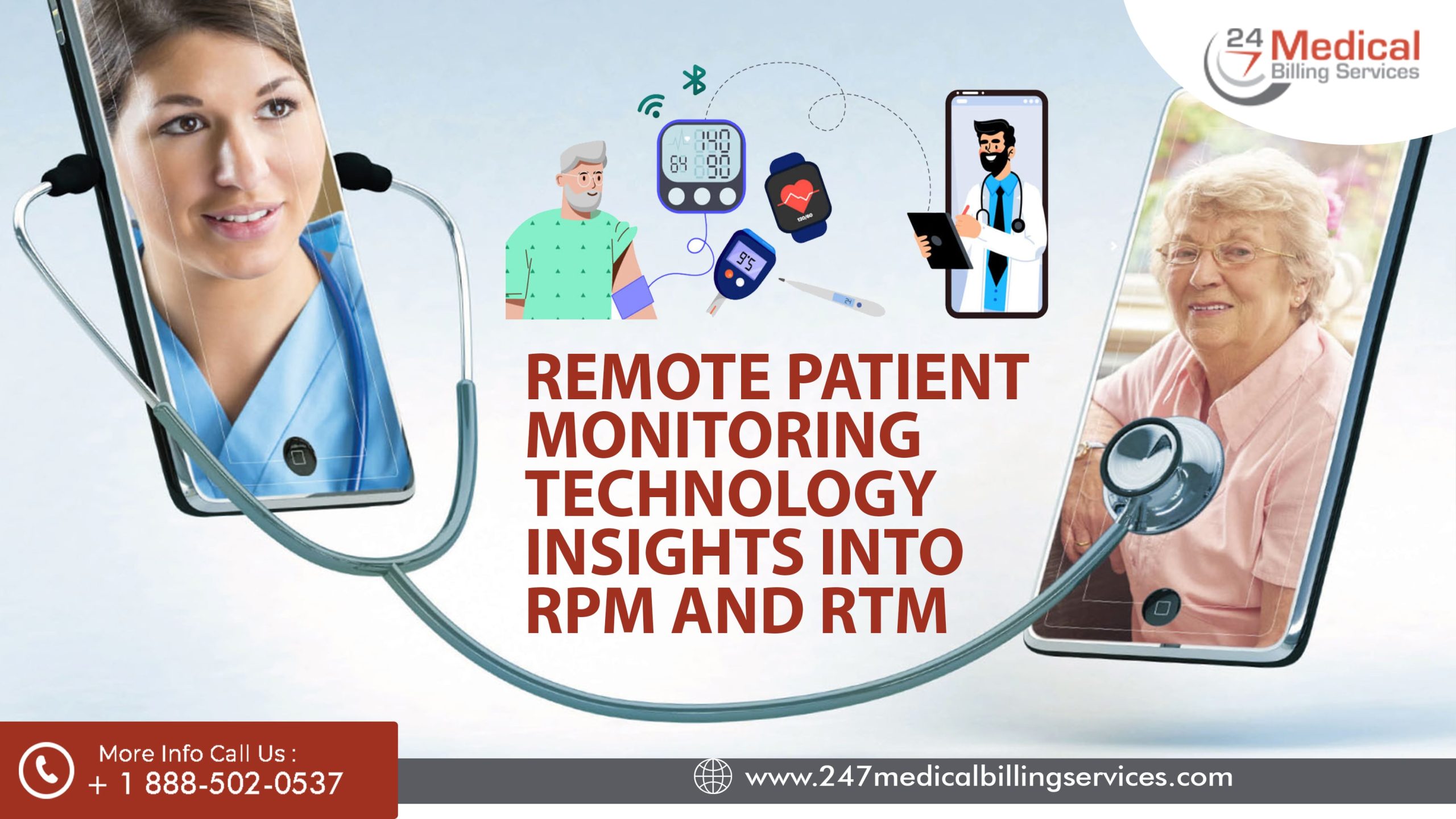
Remote Patient Monitoring Technology Insights into RPM and RTM
Remote Therapeutic Monitoring (RTM) and Remote Patient Monitoring (RPM) have significantly transformed the healthcare industry, particularly following the expansion of reimbursement policies. As a result, there is a need to understand the nuances of these technologies and their implications for medical billing and coding, which is essential for care delivery organizations. Let’s have a look at such a relationship:
1. Expansion of Reimbursement Policies
CMS's expansion of reimbursement policies has driven the increased utilization of RPM and RTM. Therefore, the key policy changes include:- Billing Flexibility: Providers can now bill for RPM or RTM alongside other care management services for the same patient, such as Chronic Care Management (CCM) and Transitional Care Management (TCM).
- Inclusion of RHCs and FQHCs: Rural Health Centers (RHCs) and Federally Qualified Health Centers (FQHCs) can bill separately for RPM and RTM services.
2. Increased Medicare Claims and Financial Implications
The impact of these policies is evident in the surge of Medicare claims:- Growth in Medicare Payments: Payments for the four most common remote monitoring billing codes rose dramatically from $5.5 million in 2019 to $101.4 million in 2021.
- New Opportunities for Compensation: The inclusion of RTM codes in the reimbursement system creates new opportunities for financial compensation, encouraging more providers to adopt these technologies.
3. Differences Between RTM and RPM
Understanding the distinct focus of RTM and RPM is crucial for effective billing and coding:- RTM Focus: RTM centers on monitoring therapeutic responses, such as treatment adherence and response, and specific conditions, such as musculoskeletal system status.
- RPM Focus: RPM primarily involves monitoring physiological parameters, such as heart rate, blood pressure, and glucose levels.
4. Growth and Utilization Trends
Analyzing the growth and utilization trends of RTM and RPM reveals essential insights:- Quarterly Growth of RTM: RTM has experienced strong quarterly growth since introducing reimbursement codes, though total volumes remain low as hospitals optimize their use.
- Primary Billers for RTM: Initially, CMS projected physicians, physiatrists, nurse practitioners, and physician assistants as primary billers for RTM codes. Moreover, other providers, such as occupational therapists and physical therapists, are also eligible under supervision.
5. Comparison of Market Utilization
Comparing the markets for RPM and RTM highlights potential growth trajectories:- Technological Infrastructure: The infrastructure established for RPM can support RTM deployment, leveraging existing resources such as EHRs and telemedicine platforms.
- Claims Mix Shift: RPM claims have shifted towards ongoing management, demonstrating sustained utilization beyond the initial setup phase. This trend is expected to follow for RTM as billing practices become more familiar.
6. RTM Claims by Diagnosis Codes
Early RTM claims provide insights into prevalent conditions and therapeutic areas:- Musculoskeletal and Respiratory Systems: Most RTM claims are for diagnosis codes related to joint diseases, other musculoskeletal conditions, and respiratory disorders like COPD and asthma.
- Behavioral Health: Initial data shows RTM claims for behavioral health conditions, which were not previously covered under RPM.
7. Strategic Implications for Care Delivery Organizations
Care delivery providers can derive several strategic insights from the expanded use of RTM and RPM:- Leveraging Existing Infrastructure: Hospitals can utilize existing RPM infrastructure to support RTM, enhancing care coordination and communication among healthcare professionals.
- Filling Data Gaps: RTM data can fill information gaps, offering insights into patient therapy responses and informing more precise clinical decision-making.
- Expanding Service Provision: RTM can provide a broader range of services, including psychological and behavioral therapies, catering to hard-to-monitor conditions.
8. Real-World Impact and Future Directions
The real-world impact of RTM and RPM underscores the need for continued innovation and policy advocacy:- Patient-Centered Care: Understanding patient responses to treatment through RTM can lead to more personalized care management and preventative measures.
- Policy Advocacy: Accumulating clinically validated data can support advocacy for expanded RTM billing indications, broadening its use cases and enhancing care delivery.
Conclusion
The expansion of reimbursement policies for RTM and RPM has revolutionized patient care, offering new opportunities for financial compensation and improved care coordination. Furthermore, understanding the distinctions between RTM and RPM, leveraging existing infrastructure, and focusing on patient-centered care strategies are essential for maximizing the benefits of these technologies. As the healthcare industry evolves, continued innovation and policy advocacy will be crucial for sustaining and expanding the use of remote monitoring technologies.You can also outsource medical billing and coding services to 24/7 Medical Billing Services to enhance the efficiency and accuracy of your healthcare operations. These specialized service providers bring expertise in navigating complex billing codes and staying updated with the latest regulatory changes, such as RPM and RTM reimbursements. Additionally, their team often utilizes advanced technology to streamline processes, ensure compliance, and provide comprehensive reporting, ultimately improving your healthcare organization's cash flow and financial performance.

.png)